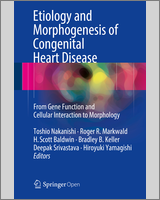The ductus arteriosus (DA), an important fetal artery that connects the main pulmonary artery and the aortic arch, closes immediately after birth. Therefore, closure of the DA is a symbolic event of the change from fetal to neonatal circulation. When the DA remains open after the first 3 days of life in humans, the condition is called patent DA (PDA), and it usually causes a left-to-right shunt. If the shunt volume significantly increases, neonates may exhibit pulmonary edema and respiratory distress. Especially in preterm infants, PDA could be a serious life-threatening risk. The incidence of PDA unaccompanied by any other cardiovascular abnormality has been estimated to be 0.06 % of term infants, and the incidence sharply increases in premature infants. Symptomatic PDA cases have been found in 28 % of infants with very low birth weight (<1500 g) and 55 % of infants with extremely low birth weight (<1000 g). On the other hand, PDA is lifesaving in some patients with congenital heart diseases such as hypoplastic left heart syndrome and pulmonary atresia. The DA must be open to maintain blood flow in the systemic or pulmonary circulation. Current pharmacological treatment for closing or maintaining PDA is limited to the agents that control the vasodilatory effect of prostaglandin E2 (PGE2), such as cyclooxygenase inhibitors or PGE1 preparations.
DA closure is thought to occur in response to a combination of two different mechanisms. One mechanism is an acute response of smooth muscle constriction within the first several hours of life, known as functional closure of the DA. The other is a relatively chronic response of structural change in the DA during the perinatal period, known as anatomical closure or vascular remodeling, such as progression of neointimal thickening and impaired elastic fiber formation. After shutting down blood flow, progressive apoptosis and fibrotic changes occur in the DA, resulting in permanent DA closure and a remnant structure known as the ligamentum arteriosum. In this part, four studies highlight the recent advances in molecular mechanisms underlying DA closure from the perspective of functional and anatomical closure.
The primary driving force behind functional DA closure is an increase in oxygen tension and a decrease in circulating PGE2. The DA is an oxygen-sensitive vessel. Several potassium channels are known to play an important role in the oxygen-sensing system. Momma et al. show that ATP-sensitive potassium channels (KATP channels) are another oxygen sensor. They show that sulfonylureas, which are commonly used to treat diabetes, inhibit KATP channels to constrict the DA, suggesting that sulfonylureas can be used for patients with PDA. The response to oxygen is weaker in premature DA than in mature DA. Hayama et al. investigate the developmental changes in the contractile apparatus and sarcoplasmic reticulum in the DA and its connecting arteries that may contribute to the oxygen-sensitive mechanism.
Anatomical closure of the DA is associated with distinct differentiation of the vessel wall. Intimal thickening is the most prominent phenotypic change, and it involves several processes: (a) an area of subendothelial extracellular matrix deposition, (b) the migration of undifferentiated medial smooth muscle cells (SMCs) into the subendothelial space, and (c) the disassembly of the internal elastic lamina and the loss of elastic fibers in the medial layer. Yokoyama et al. demonstrate that chronic activation of the PGE2 receptor EP4 plays a pivotal role in neointima formation and impaired elastic fiber formation in the DA. Therefore, PGE2 signaling has dual roles in functional and anatomical DA closure. DA remodeling is known to resemble the vascular remodeling of aging arteries. Gittenberger-de Groot et al. demonstrate that progerin, an alternative splice variant of lamin A/C, is highly expressed in the closing DA as well as in premature aging of vessels in children with Hutchinson progeria syndrome, suggesting that progerin plays a role in vascular remodeling of the DA.
These studies show that development of a new strategy to treat DA closure or opening first requires understanding of the precise molecular mechanisms underlying both functional and anatomical DA closure.

